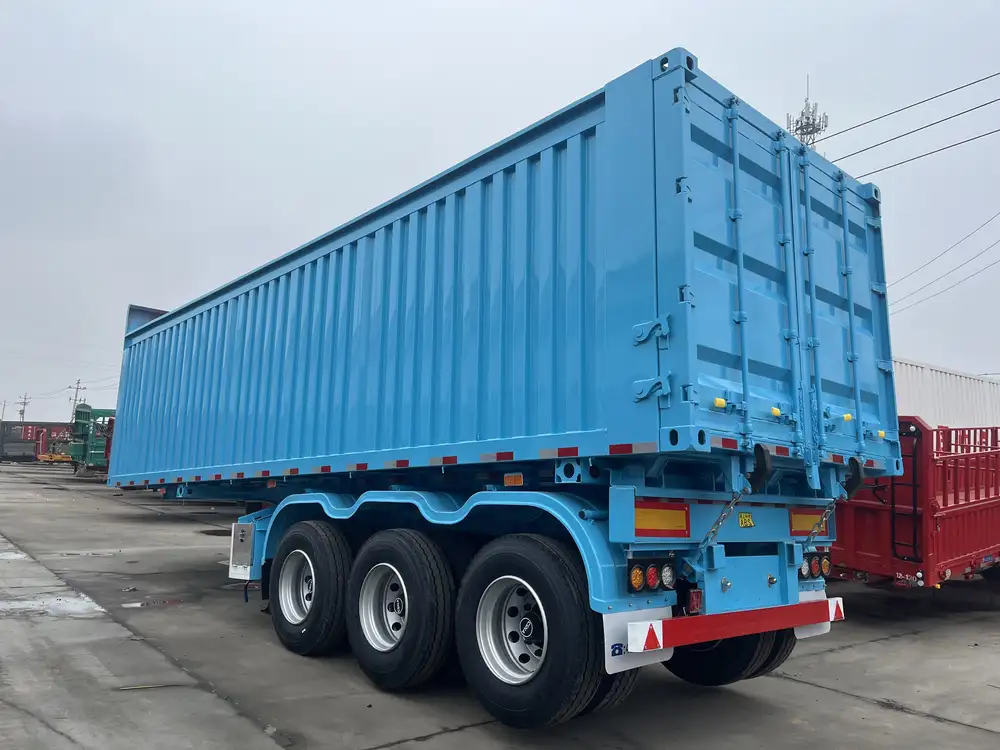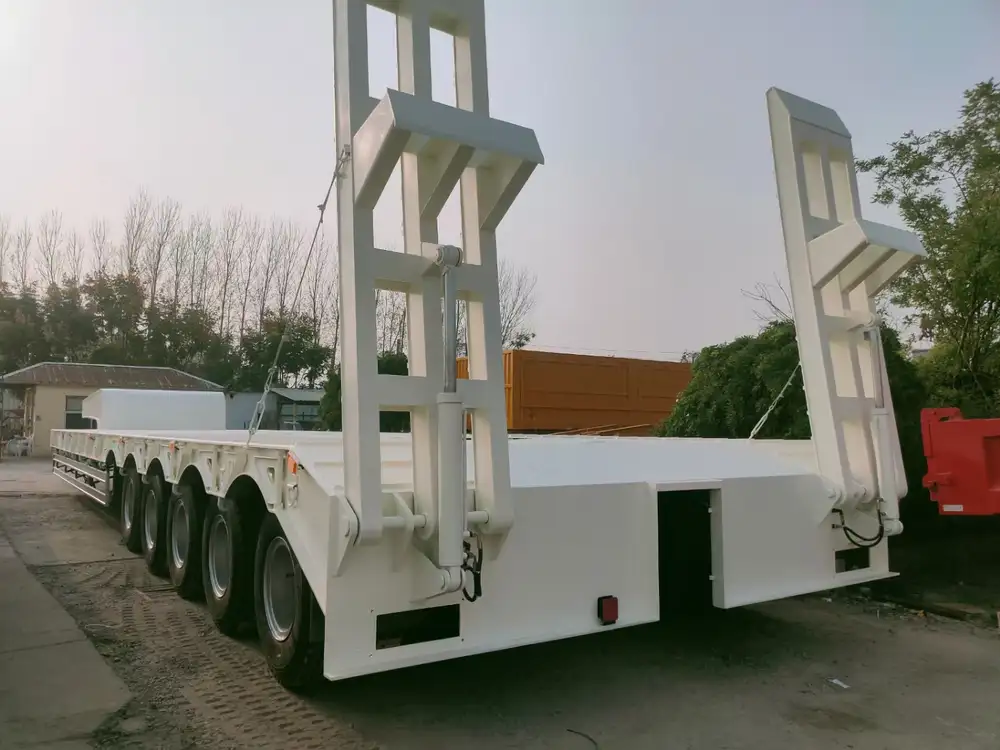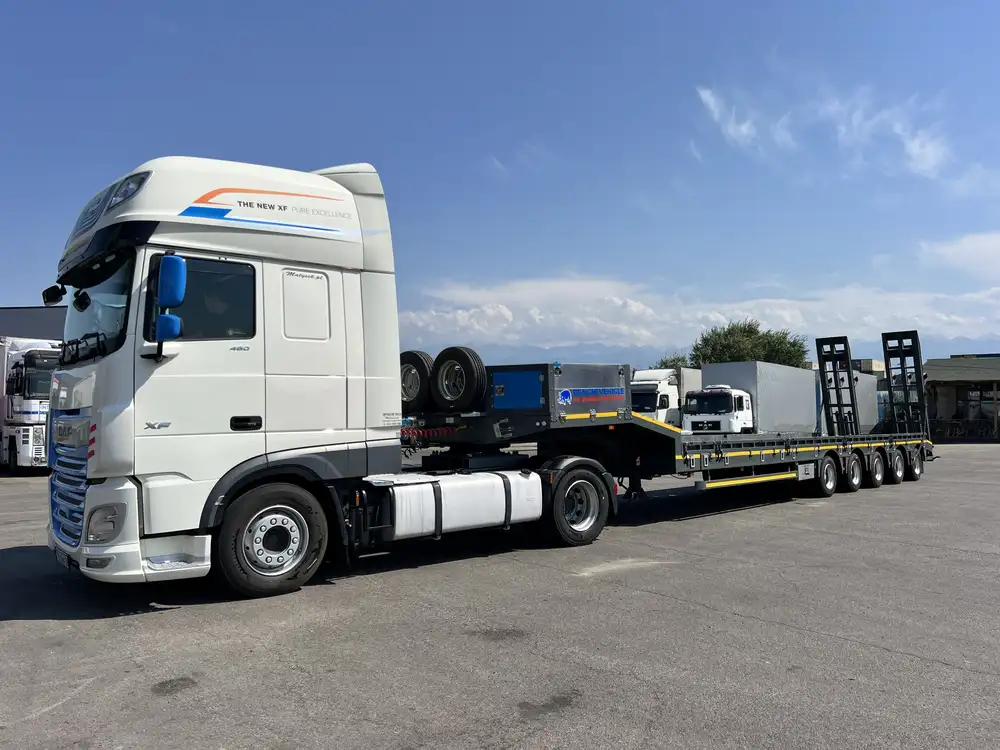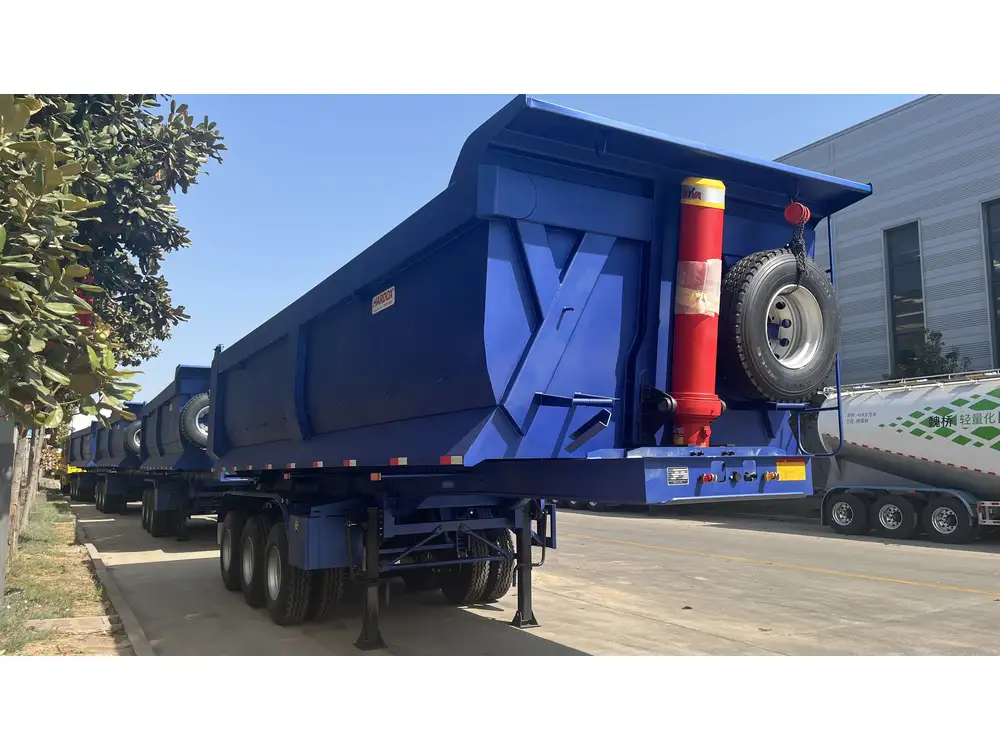Introduction
The semi-trailer industry is steeped in complexity and nuances, making understanding the transport and logistics surrounding it not merely beneficial but essential. In this article, we delve into the pivotal question: How much money can a 53-foot semi-trailer carry? Armed with information, logistics professionals, fleet managers, and even independent operators can optimize their operations, ensuring they maximize their profitability per load.
Structural Overview of a 53-Foot Semi-Trailer

Dimensions and Capacity
- Length: A standard 53-foot semi-trailer measures exactly 53 feet (16.15 meters) in length.
- Width: Typically 102 inches (2.6 meters) wide.
- Height: Generally around 13.5 feet (4.1 meters).
These dimensions collectively contribute to the trailer’s internal volume, influencing how much cargo a driver can transport.
Weight Capacities
The maximum gross vehicle weight (GVW) for a semi-trailer, including the tractor, is commonly regulated by the Federal Bridge Law, which dictates the following:
- Max Weight: 80,000 pounds (approximately 36,287 kg)
- Typical Load Capacity: A 53-foot semi-trailer often carries a useful payload of about 45,000 to 48,000 pounds (20,411 to 21,772 kg), depending on the specifics of the tractor and any equipment attached.
Types of Cargo
The revenue generated by a 53-foot semi-trailer heavily depends on the type of cargo it carries. Cargo can range from sensitive electronics to bulk agricultural products. Here’s a breakdown of various types of cargo:
| Cargo Type | Revenue Potential | Weight Range per Load |
|---|---|---|
| Dry Van Freight | High | Up to 45,000 lbs |
| Refrigerated Goods | Moderate to High | Up to 42,000 lbs |
| Hazardous Materials | High | Variable |
| Flatbed Loads | Moderate | Typically up to 48,000 lbs |
| Specialized Equipment | High | Variable based on equipment |

Revenue Calculations
Calculating the revenue potential of a 53-foot semi-trailer is a complex equation influenced by variables like cargo type, distance, market demand, and fuel costs. Let’s dissect these pivotal factors:
Mileage Rates and Earnings per Load
- Average Rate Per Mile: The average mileage rate for freight in the U.S. ranges from $1.50 to $3.00, depending on the type of cargo being transported.
- Distance: A typical long-haul trip can cover approximately 500 to 1,000 miles.
Using these figures, we can perform a basic calculation of revenue per trip:
| Rate Per Mile | Distance (Miles) | Revenue Estimate |
|---|---|---|
| $1.50 | 500 | $750 |
| $2.00 | 750 | $1,500 |
| $3.00 | 1,000 | $3,000 |
From the table, it becomes evident that the potential earnings per loaded trip can vary, leading to discussions on maximum profitability.
Operational Costs
Maximizing revenue involves a measured understanding of operational costs:
Fuel Costs: Considering the average fuel economy for a semi-trailer is around 6.5 miles per gallon, for a 1,000-mile trip, the fuel cost would roughly be:
[ \text{Fuel Needed} = \frac{\text{Distance}}{\text{MPG}} = \frac{1,000}{6.5} = 153.85 \text{ gallons} ]
If diesel is priced at $3.50 per gallon, the total fuel cost is:
[ \text{Total Fuel Cost} = 153.85 \times 3.50 \approx 538.48 ]Driver Salaries: Competitive driver salaries may range from $0.50 to $0.60 per mile, contributing significantly to overall costs.
Maintenance and Depreciation: It’s essential to budget for regular maintenance costs and the depreciation of the vehicle.

Exploring Gross Profit Margins
To understand how much money a 53-foot semi-trailer can truly carry, it’s crucial to calculate gross profit margins. Let’s illustrate this through a simplified equation.
Gross Profit Steps
- Revenue – Operational Costs = Gross Profit
Using an example: If revenue from a trip is $1,500 and operational costs are $800, then:
[ \text{Gross Profit} = 1500 – 800 = 700 ]Variability in Profitability
Profitability is not static but rather dynamic, influenced by market demand fluctuations, seasonality, and efficiency strategies. Seasonal goods, like food products, might command higher rates during peak seasons, thus enhancing revenues.

Variables Affecting Revenue Streams
Load Type and Seasonality
- High-Demand Periods: Understanding seasonal trends is vital. For example, transporting agricultural produce during harvest can yield higher revenues.
- Load Optimization: Efficient loading techniques, securing maximum payloads, and fully utilizing the volume of a 53-foot trailer can lead to optimal revenue.
Geographic Considerations
The geographic location and destination of loads play a crucial role in revenue. Regions with high freight demand generally yield better rates compared to rural areas with limited market access.

Conclusion
The financial viability of a 53-foot semi-trailer hinges on various factors ranging from operational efficiency to external market forces. By understanding the intricacies involved in cargo types, calculating potential revenues, and managing operational costs judiciously, professionals in the logistics field can significantly enhance their profitability.
Additional Insights
As the industry continues evolving, tracking trends, regulatory changes, and technological advancements will enable those responsible for freight logistics to remain competitive and profitable. The design, structure, and utilization of a 53-foot semi-trailer are critical elements that can be refined to bolster not just revenue but overall operational efficiency.
In summary, the potential revenue a 53-foot semi-trailer can generate isn’t merely a figure but a complex interplay of various components. By gaining deep insights into how many loads, what types of cargo, and under which circumstances the trailer operates, logistics professionals can maximize their revenue potential and achieve greater success in their endeavors.
Call to Action
For those interested in maximizing the earnings of their 53-foot semi-trailers, it is advisable to continually assess operational methodologies, keeping abreast of industry trends, and embracing innovation within logistics strategies. By doing so, fleets can position themselves to capitalize on the ever-changing landscape of freight transportation, thereby ensuring a sustainable and profitable future.



